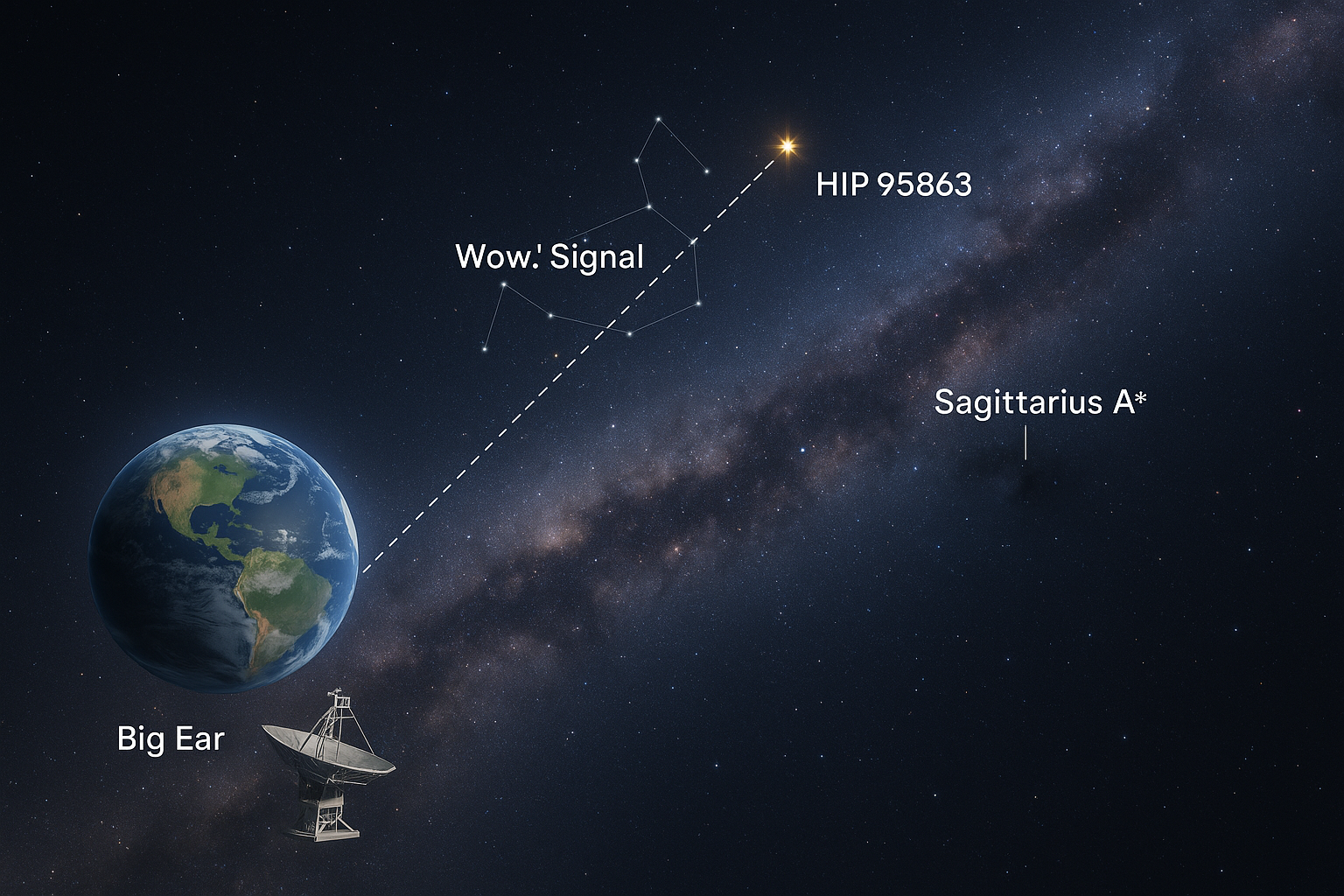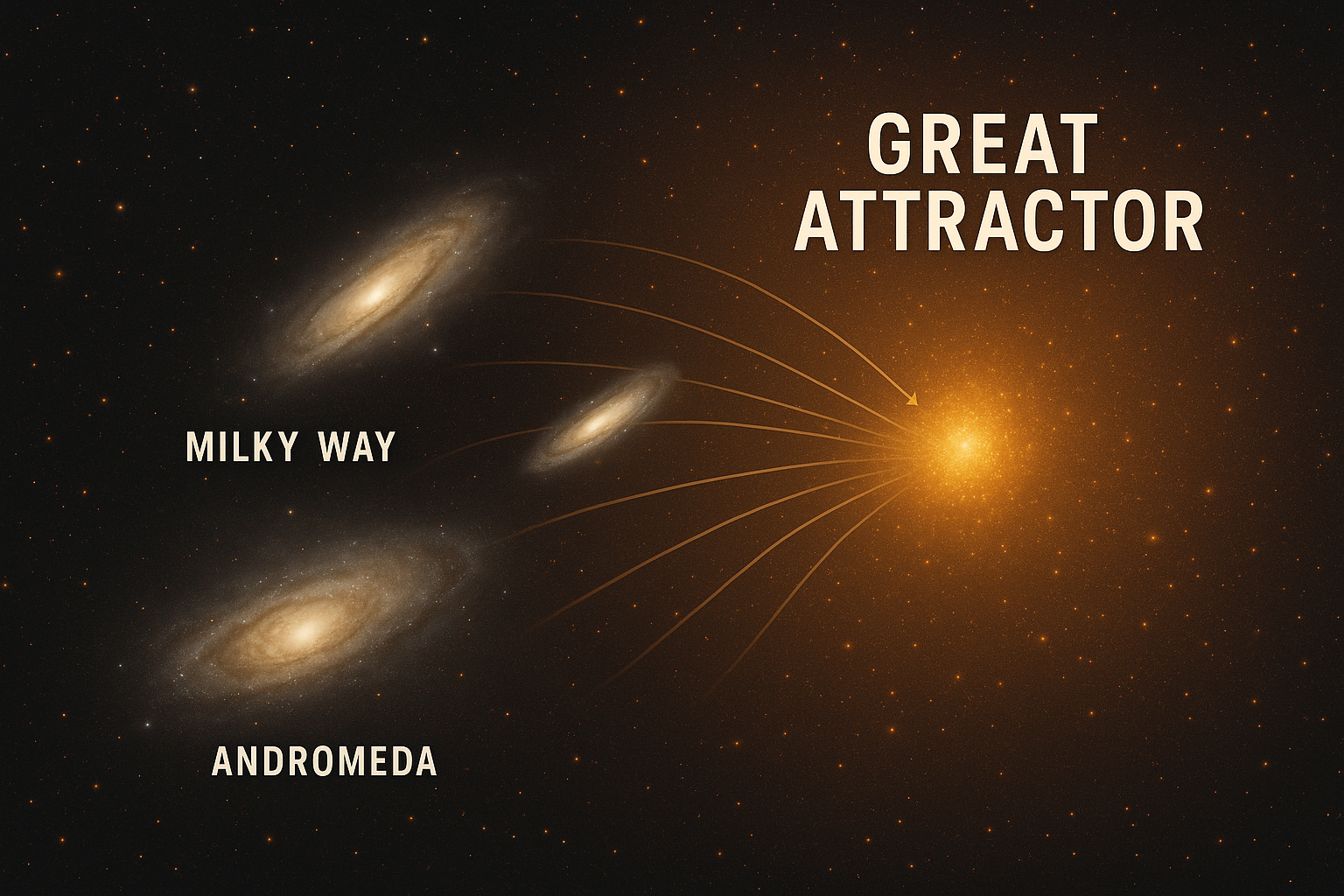A large-scale gravitational anomaly in the nearby universe that appears to pull galaxies — including our own Local Group — toward a common direction. Its nature is still the subject of active research.
Discovery and Evidence
In the late 20th century, astronomers studying the motions of galaxies found that many nearby galaxies, including members of our Local Group, are moving toward a patch of the sky in the direction of the constellations Norma and Triangulum Australe rather than away from us purely with cosmic expansion. These coherent motions implied the presence of a very large concentration of mass.
Evidence for the Great Attractor comes from:
- Galaxy redshift surveys and measurements of peculiar velocities.
- X-ray observations identifying concentrations of hot gas in galaxy clusters.
- Large-scale mapping of mass distribution via galaxy counts and gravitational lensing (where available).
Location, Composition, and the Zone of Avoidance
The region associated with the Great Attractor lies roughly in the direction of the constellations Norma and Centaurus, about 150–250 million light-years from Earth (estimates vary). One complication is that much of this area lies near the plane of the Milky Way, in the so-called Zone of Avoidance, where stars, dust and gas in our galaxy obscure background objects and make observations difficult.
What lies at the heart of the Great Attractor is not a single object but rather a complex of galaxy clusters and superclusters — including the Norma Cluster and the larger Shapley Supercluster beyond it — totalling enormous mass (both visible matter and dark matter).
Effects on Local Galaxies
The gravitational influence associated with the Great Attractor contributes to the peculiar motion of the Local Group (which contains the Milky Way and Andromeda). Our galaxy’s velocity relative to the cosmic microwave background (CMB) — the so-called CMB dipole — is the result of combined pulls from structures on many scales, with the Great Attractor being one of the major contributors.
“We do not drift aimlessly. The motion of galaxies reveals the invisible architecture of mass in the nearby universe.” — paraphrase of observational insight
Leading Interpretations and Theories
Several related ideas have been proposed to explain what produces the observed flows:
- Supercluster infall: The Great Attractor is the gravitational center of a web of galaxy clusters (including Norma) pulling surrounding galaxies inward.
- Shapley Supercluster contribution: The massive Shapley concentration, located beyond the originally identified Great Attractor, likely contributes significantly to the observed motion.
- Dark matter structure: Much of the mass causing the attraction may be dark matter, invisible except by its gravitational effects.
- Composite flow: Rather than a single attractor, the motion may result from multiple overdense regions acting together across large scales.
Observational Challenges
Mapping the Great Attractor is difficult because of:
- Zone of Avoidance: Dust and stars in the Milky Way block optical light and hide background structure.
- Scale: The region spans hundreds of millions of light-years, so surveys must combine many datasets and wavelengths (optical, infrared, X-ray, radio).
- Complexity of flows: Galaxy motions are influenced by many structures at different distances, making it nontrivial to isolate a single cause.
Why the Great Attractor Matters
The Great Attractor is a key piece of the cosmic puzzle because it:
- Reveals how mass is distributed on very large scales, including dark matter.
- Helps astronomers understand the dynamics of galaxy groups and superclusters.
- Provides a laboratory for studying how structure forms and evolves in the universe.
Further Reading & Next Steps
Astronomers continue to combine multiwavelength surveys and improved mapping techniques to refine our view of the Great Attractor and related structures (such as the Shapley Concentration and the Laniakea Supercluster). Future surveys, deeper infrared observations through the Zone of Avoidance, and better maps of dark matter will progressively clarify the full picture.










